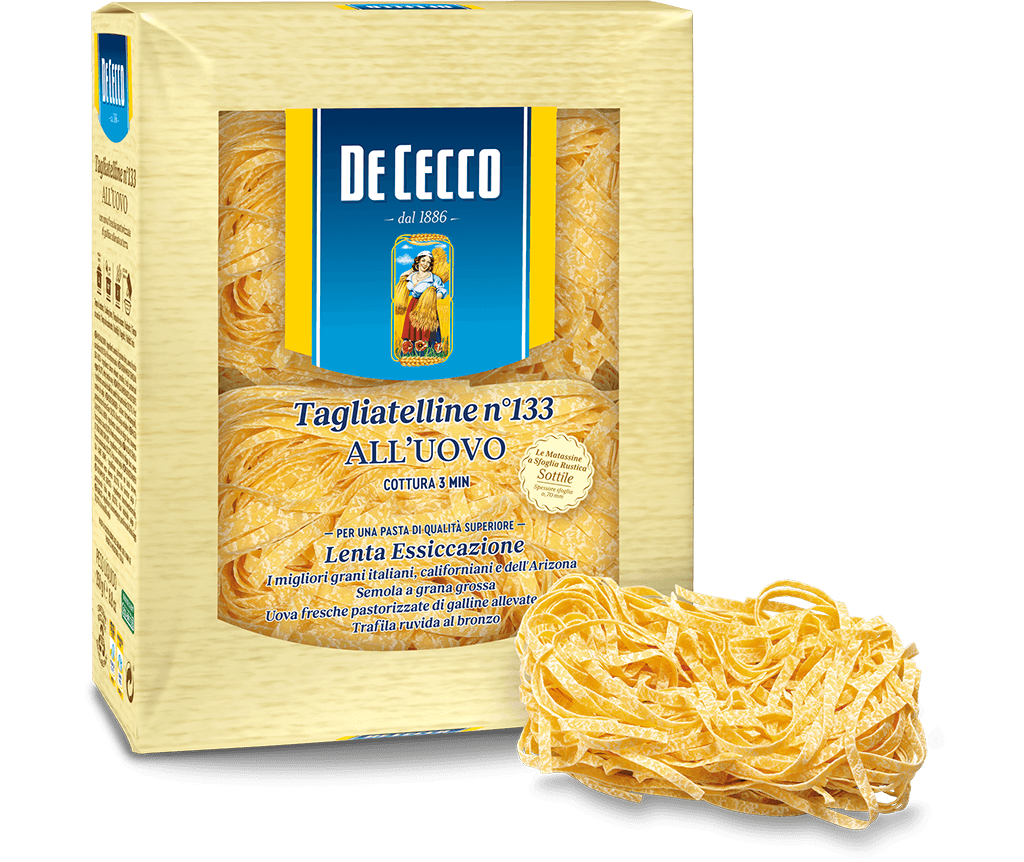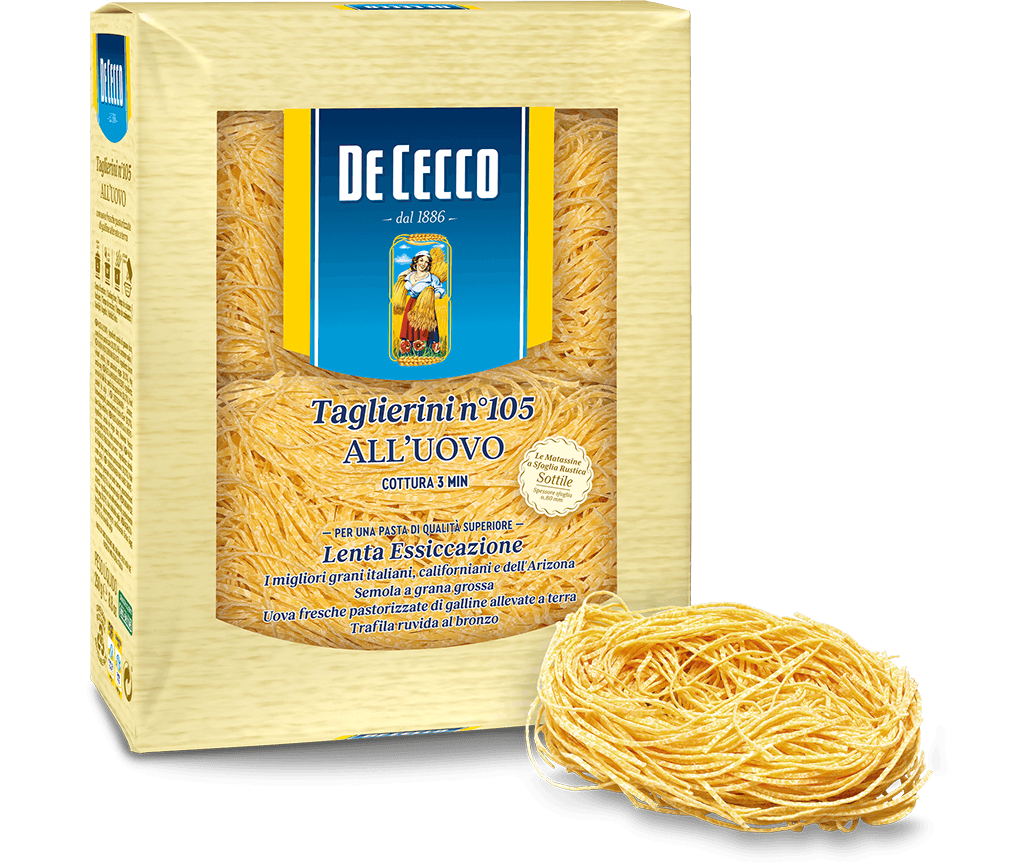Taglierini n° 105 all'uovo
Taglierini are originally from northern Italy - Emilia Romagna, Liguria, Tuscany and Lombardy - but above all from Piedmont and the Langhe hills around Alba whose culinary tradition has handed down the recipe of the "tajarin", old-fashioned handmade taglierini.
According to rural tradition, this type of pasta was created from the leftovers of filled pasta. An extract taken from the recipe book "Science in the Kitchen and the Art of Eating" by Pellegrino Artusi, printed for the first time in 1891 in Florence, testifies to the origins of Taglierini from "poor" country cooking: ".first of all a capon was used to make a good broth. Broth is an essential component in Tuscan cooking in which, if the cook in question was experienced enough, would have put tortellini or cappelletti or whatever they are called, otherwise he would have had to make do with the more humble taglierini."
The history of taglierini is not just exclusive to Italy. As a matter of fact, in Japan they eat extra-long taglierini at New Year where the length symbolises a long and happy life. There is a Korean tradition in December which is also linked to popular customs. The people living in the north of the country eat buckwheat taglierini called naengmyon to drive away evil spirits.
Taglierini are a very versatile type of pasta and there are a variety of recipes and condiments that go very well with it. They are excellent in broth for a light, nutritious first course. For those who prefer more marked flavours, you can try different tasty, strong sauces like those made with game or offal. For those who like the taste of the sea, Taglierini are also perfect for making delicious first courses based on fish and shellfish. They are especially good with just butter and truffles.
Available in 250g packs
- Cooking time: 3 min
Our method
Attention, care, experience, quality at every stage: from our mill to your table.
Tagliatelline n° 133 all'uovo
Tagliatelline, which originate from Liguria, are consumed all over Italy and are part of the long, flat pasta family.
You need to go a long way back to retrace the origins of Tagliatelline and beyond the confines of Italy. Tagliatelline were known as early as 700 BC in Japan where they were imported from China with many other cultural and religious elements. In Japan, they were called Udon, tagliatelline made from common wheat, and seem to have met with incredible success in the province of Osaka and in the southern part of the country in general.
Tagliatelline are just the right size to be served both with sauces and in broth. In the first case, the recommended condiments are those from Ligurian tradition, so with pesto as the undisputed winner, and fish and shellfish based sauces coming a close second. They are also excellent in vegetable or meat broths or, with a nod to Oriental traditions, in broths based on seaweed and mushrooms.
Available in 250g packs






